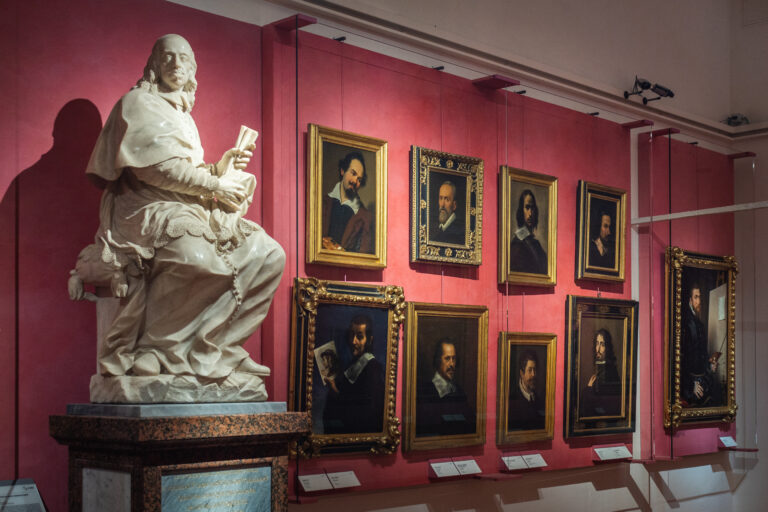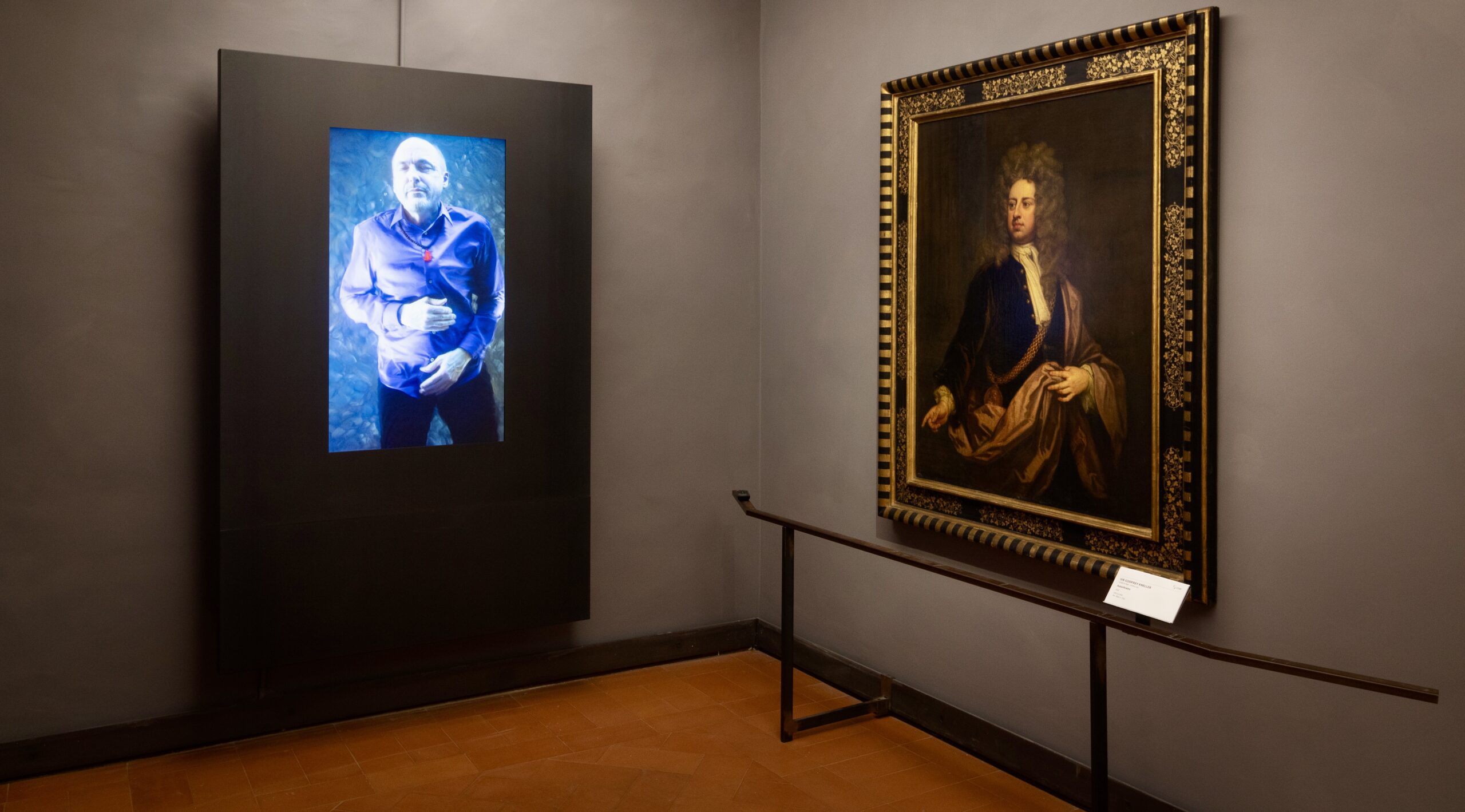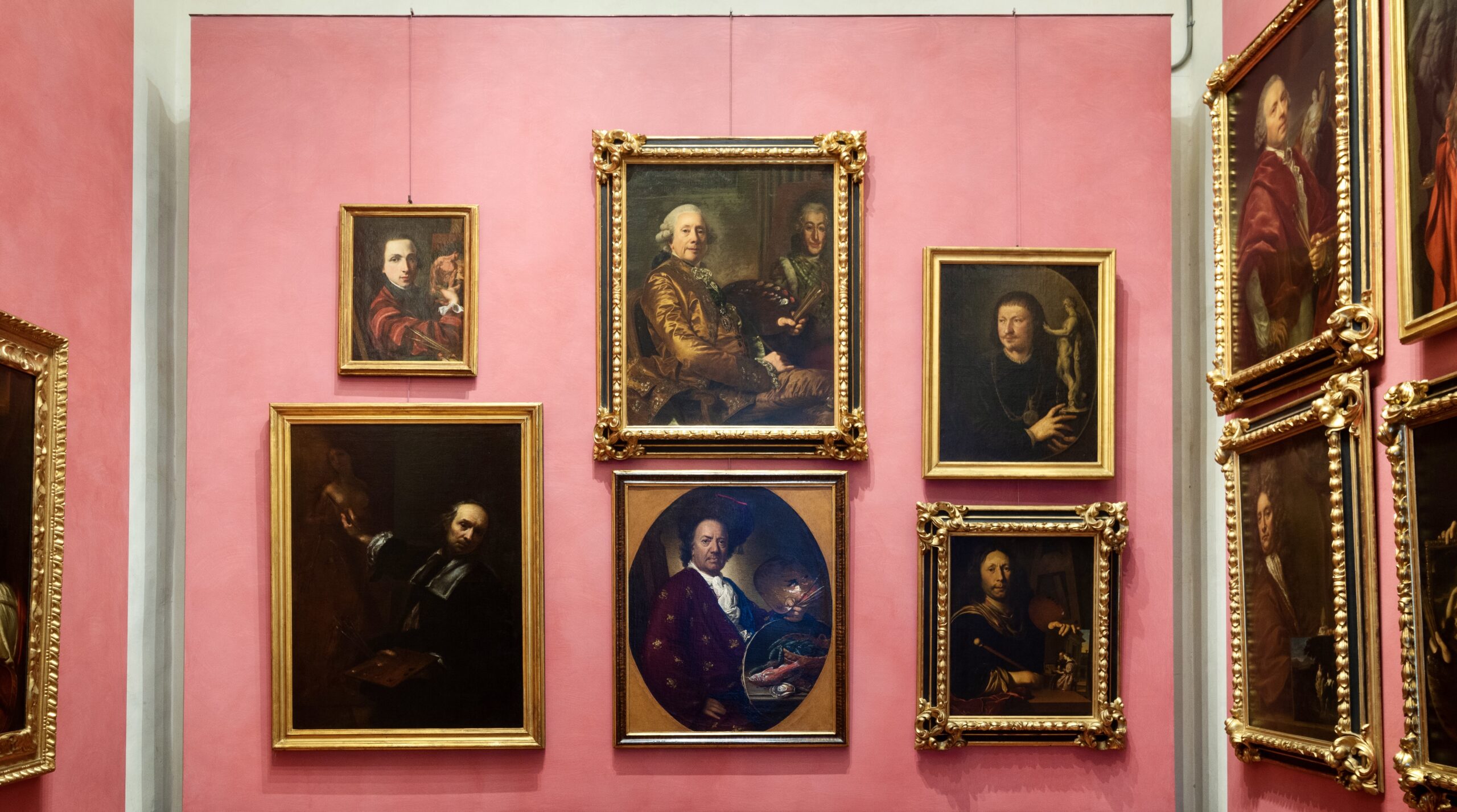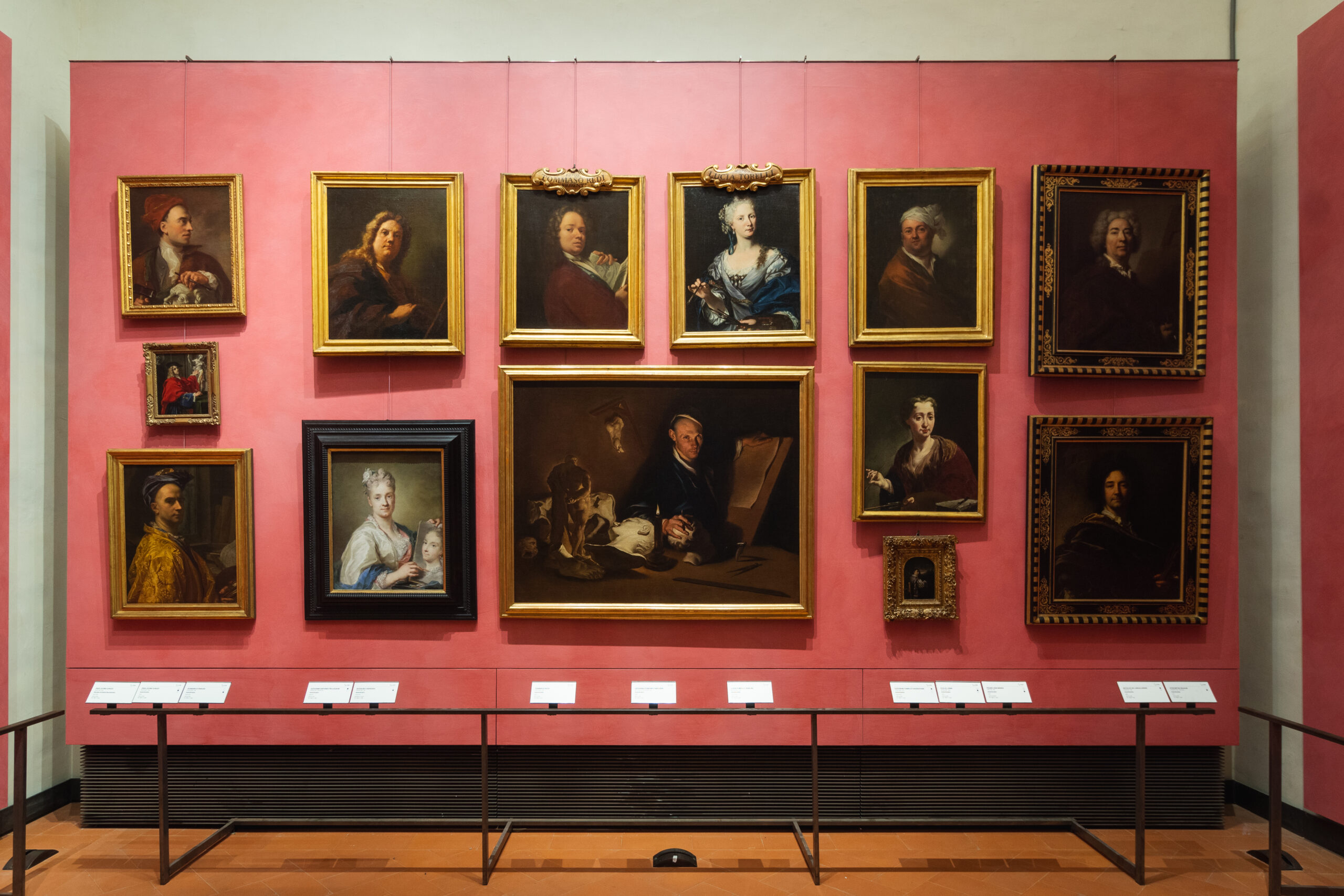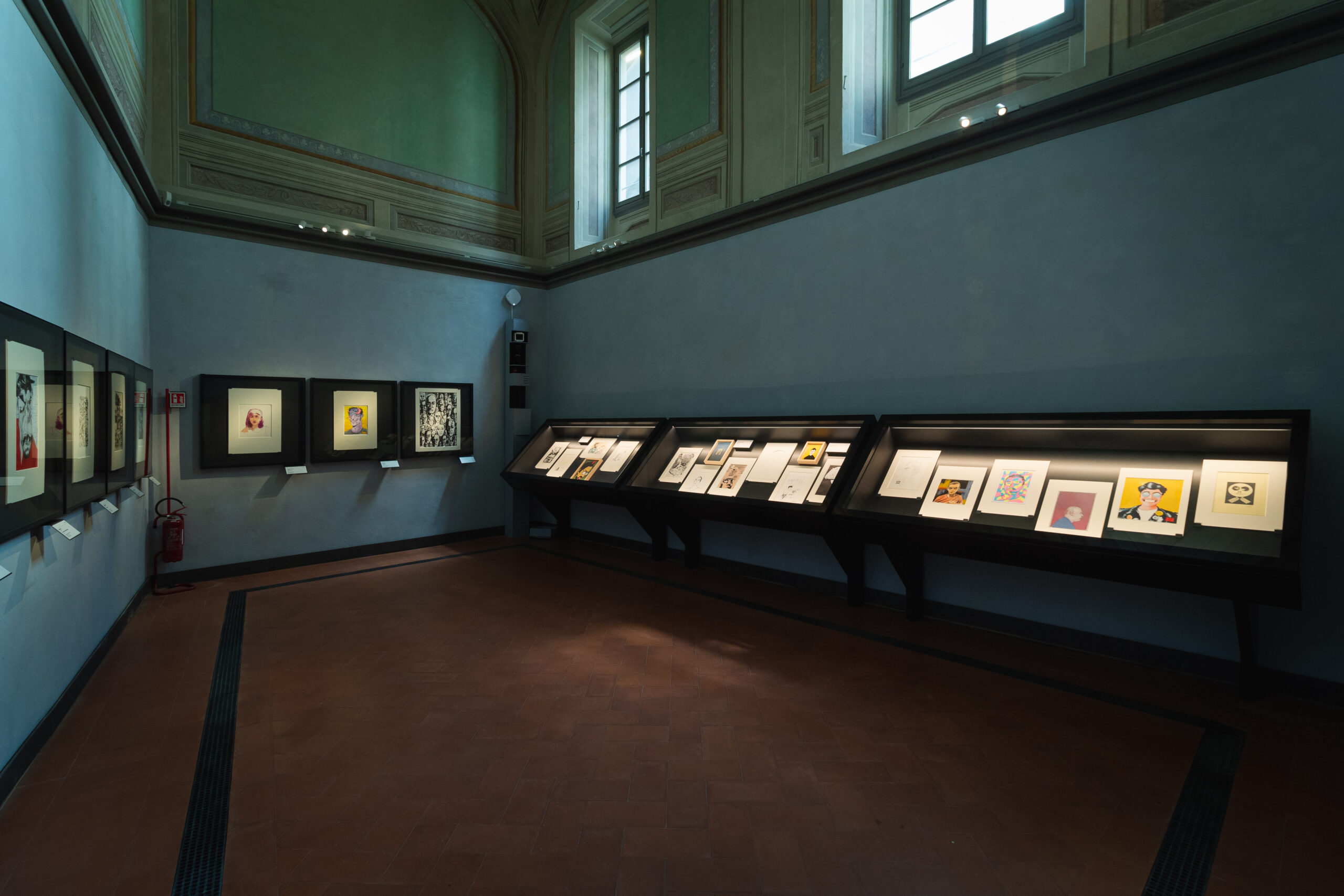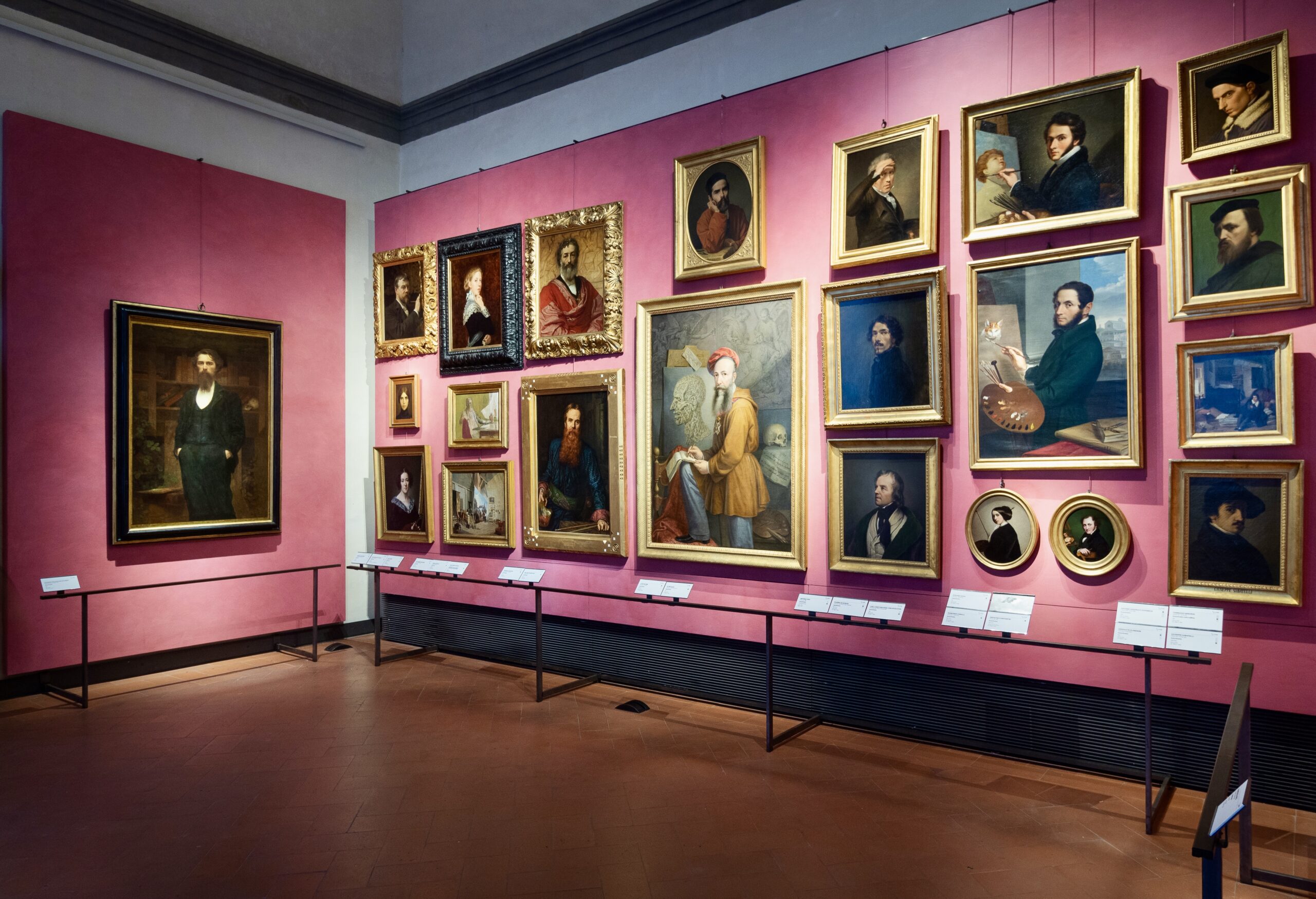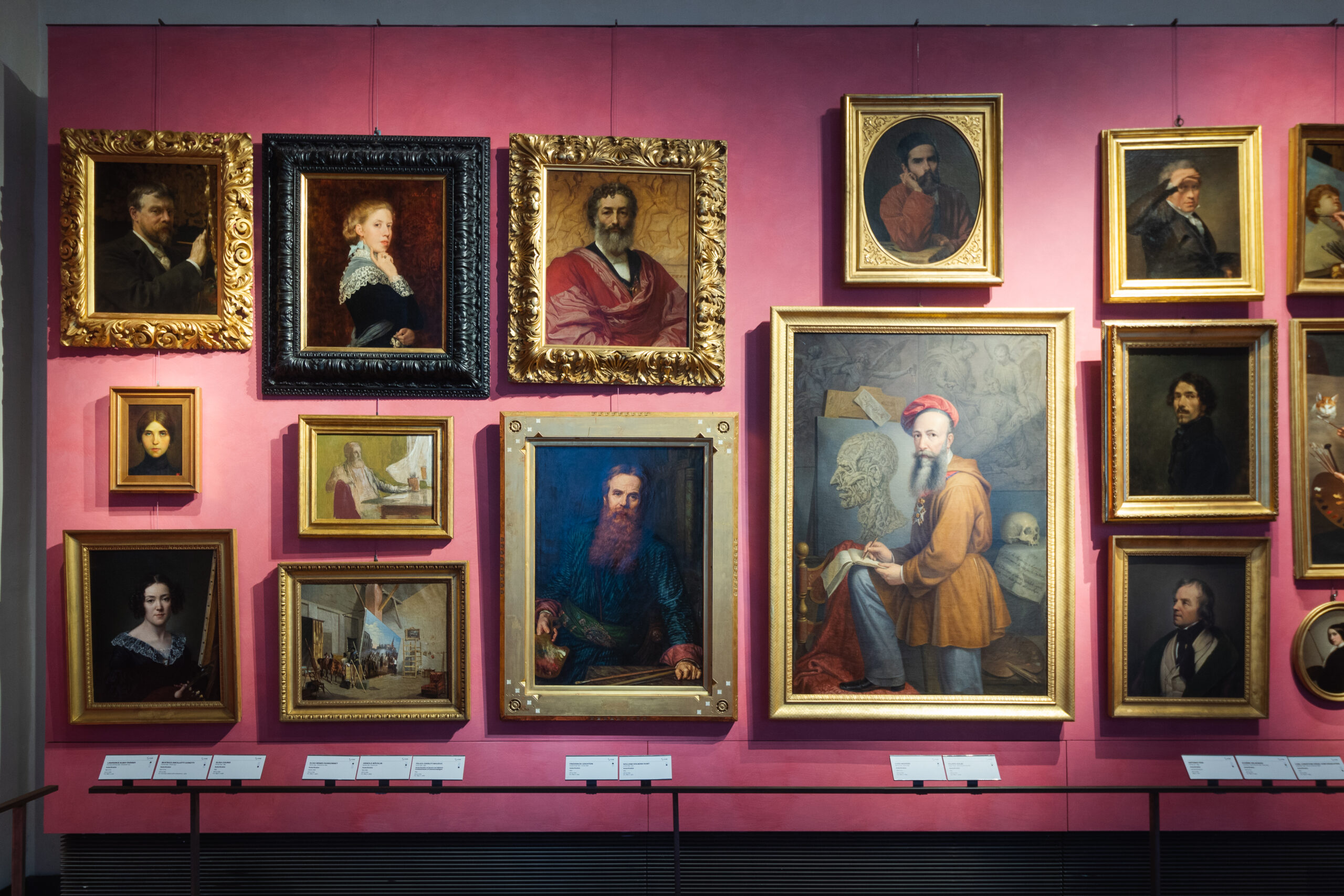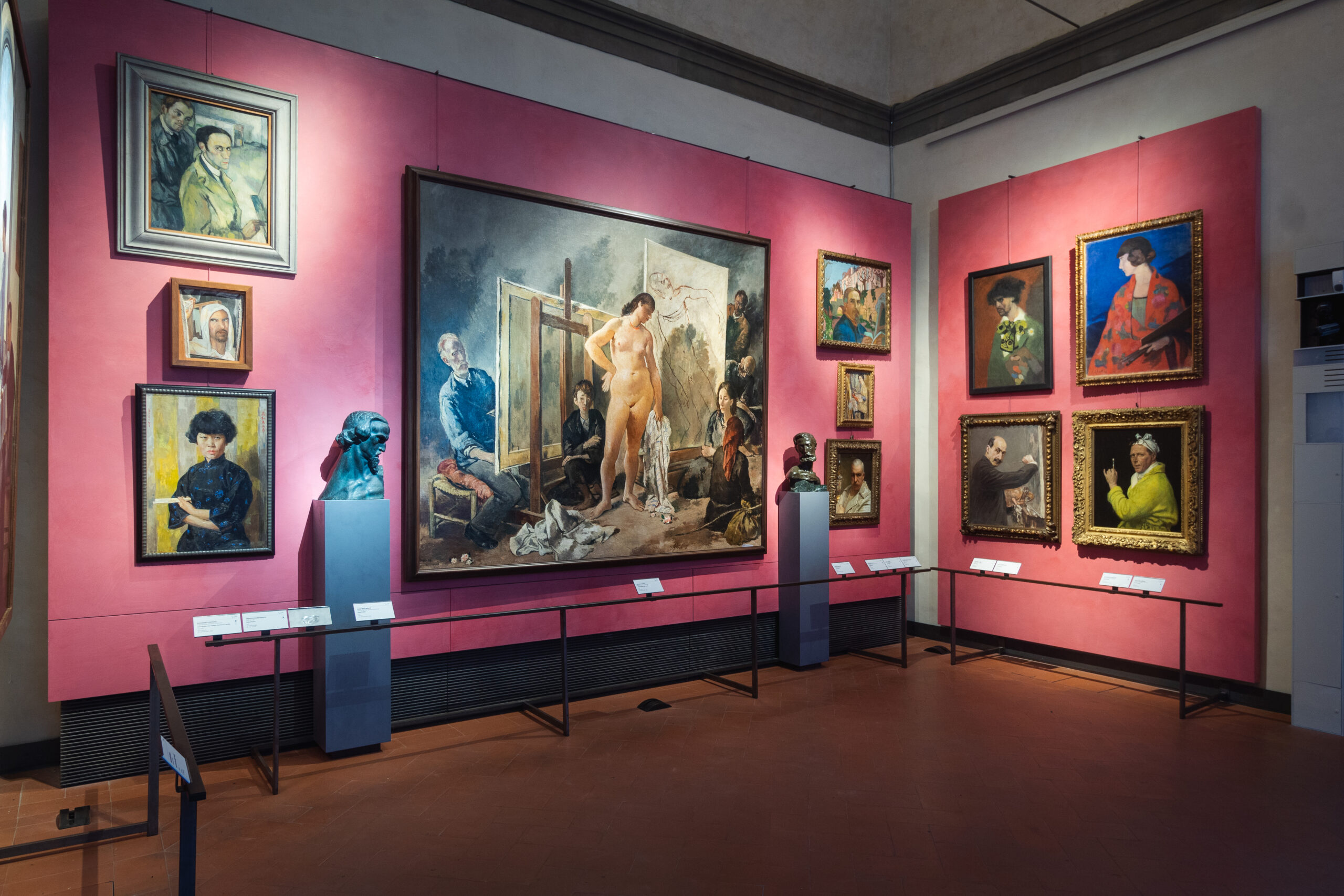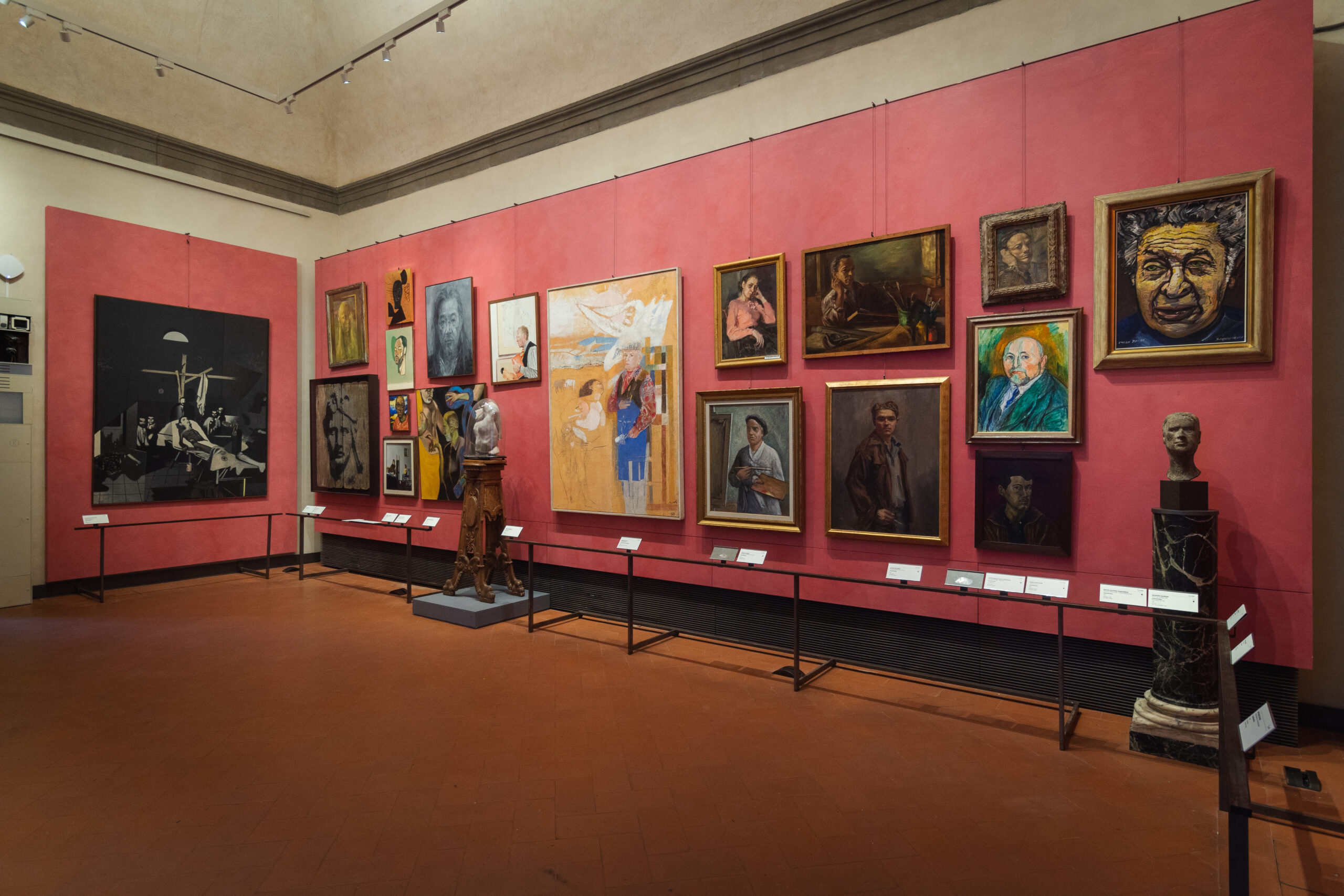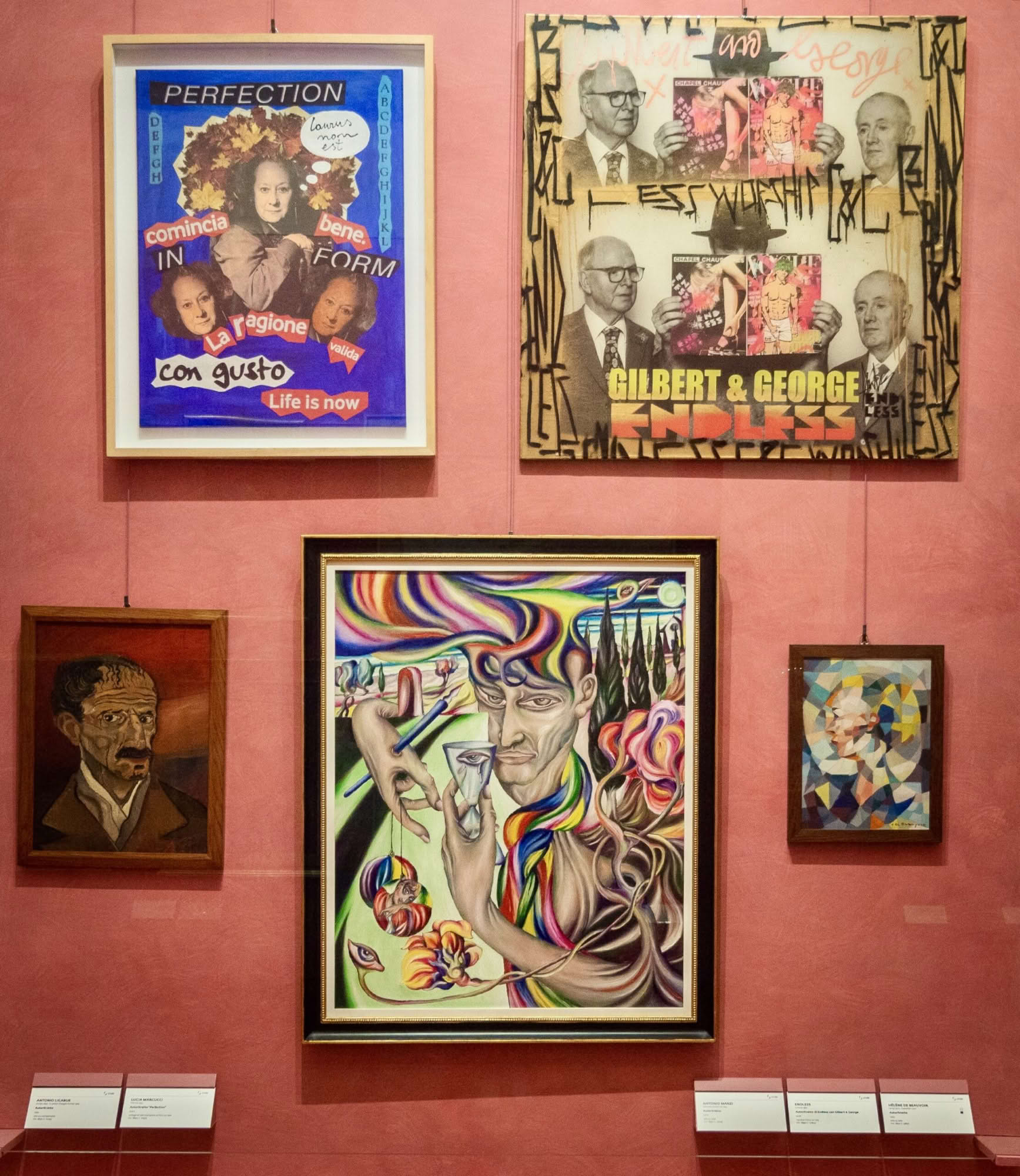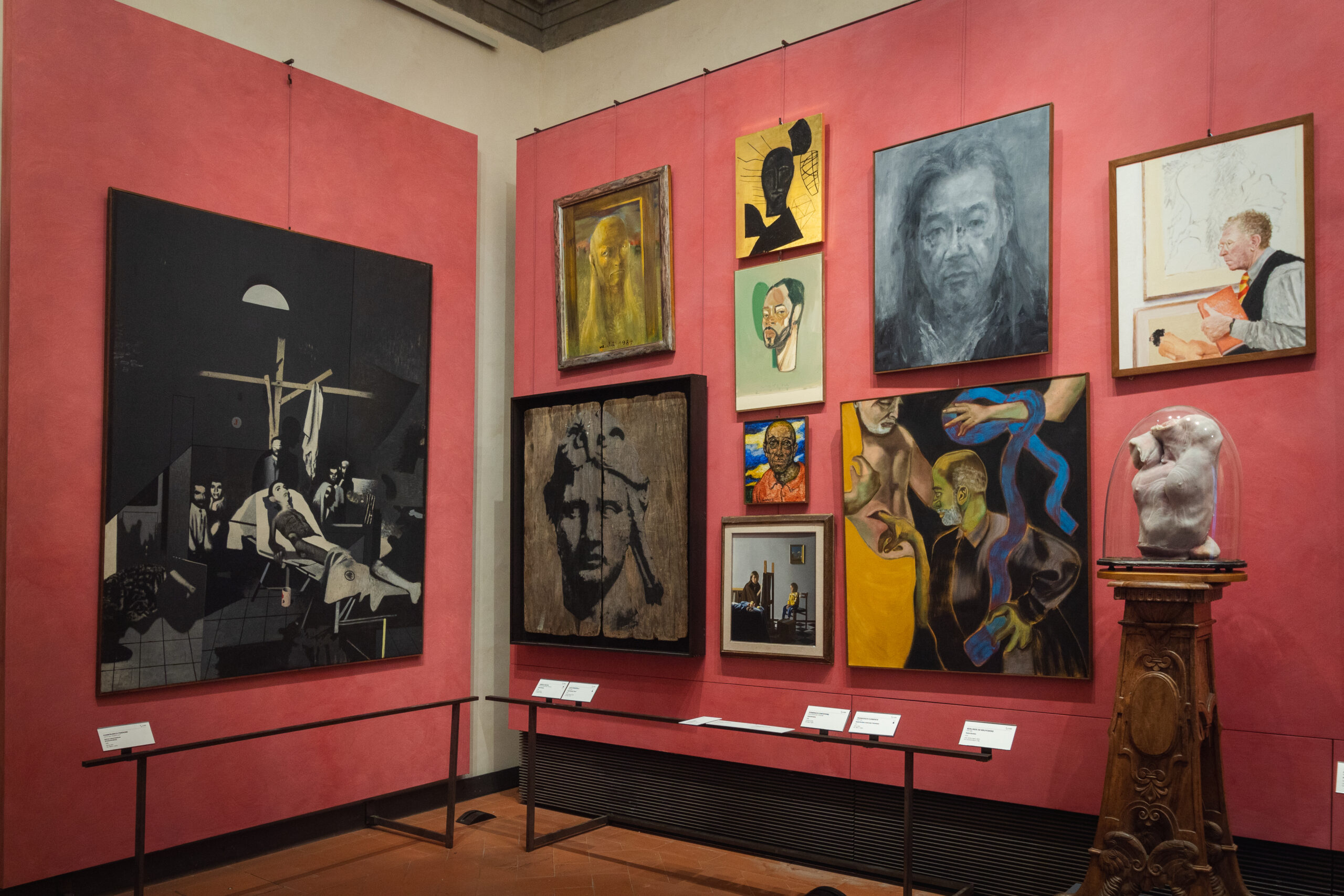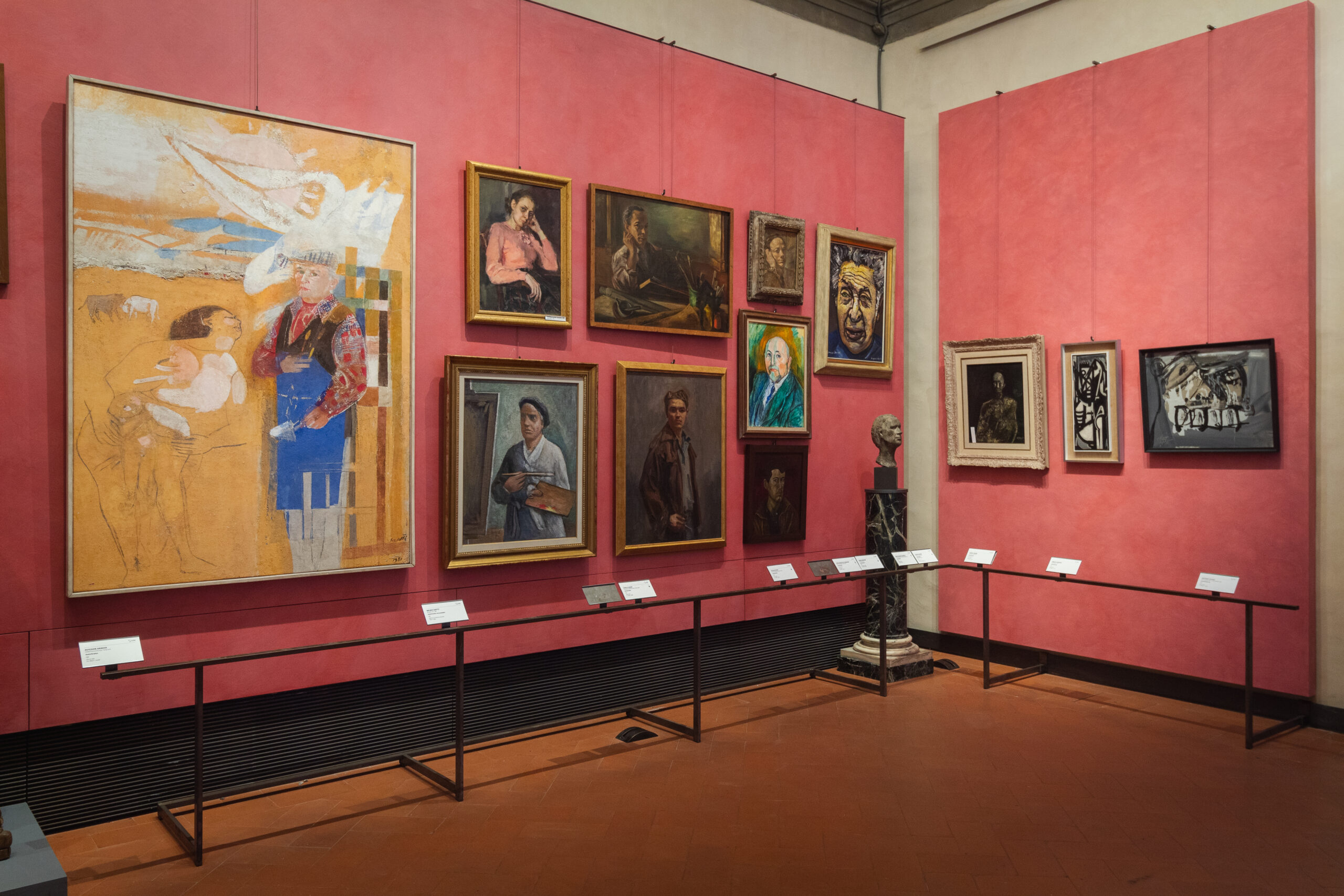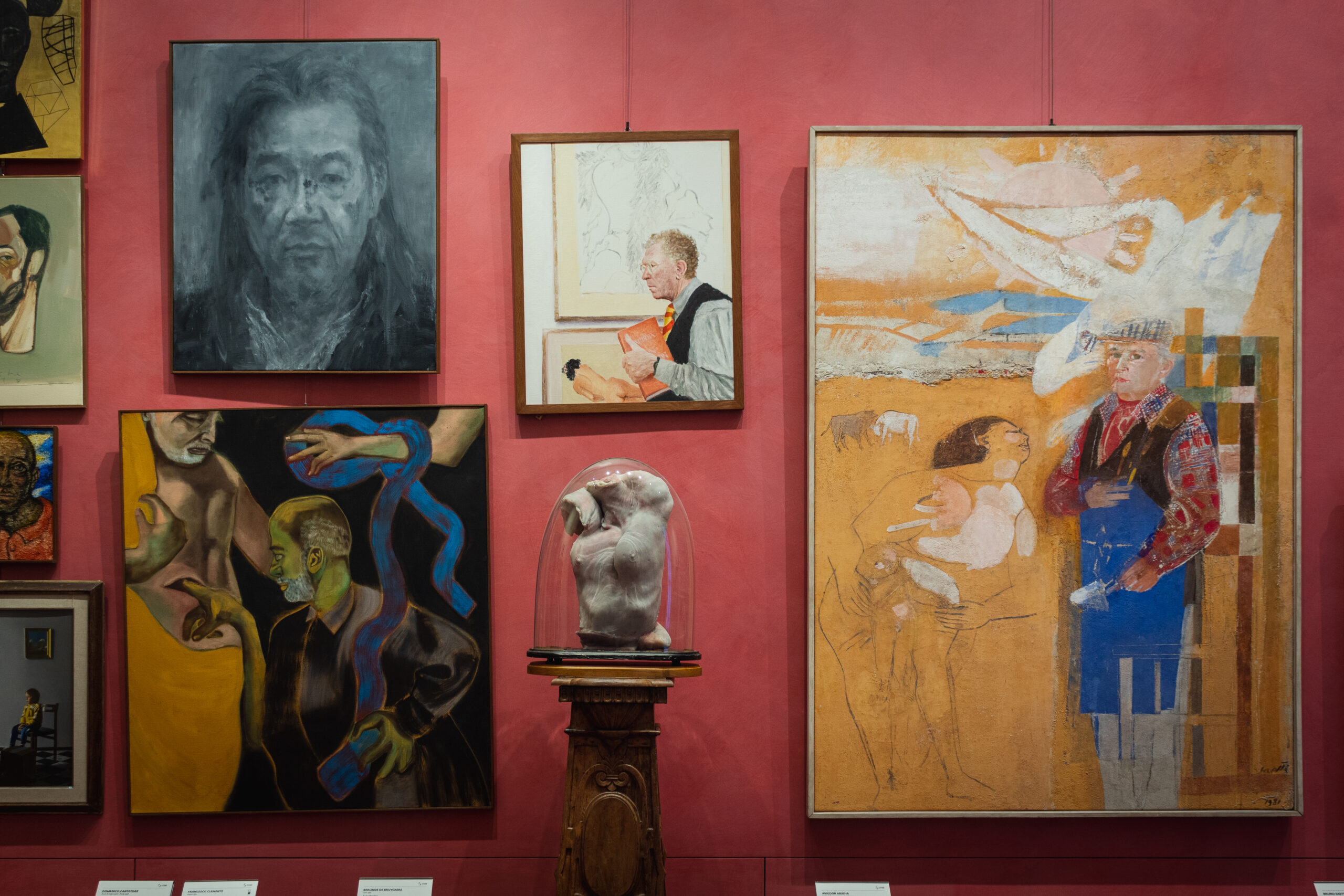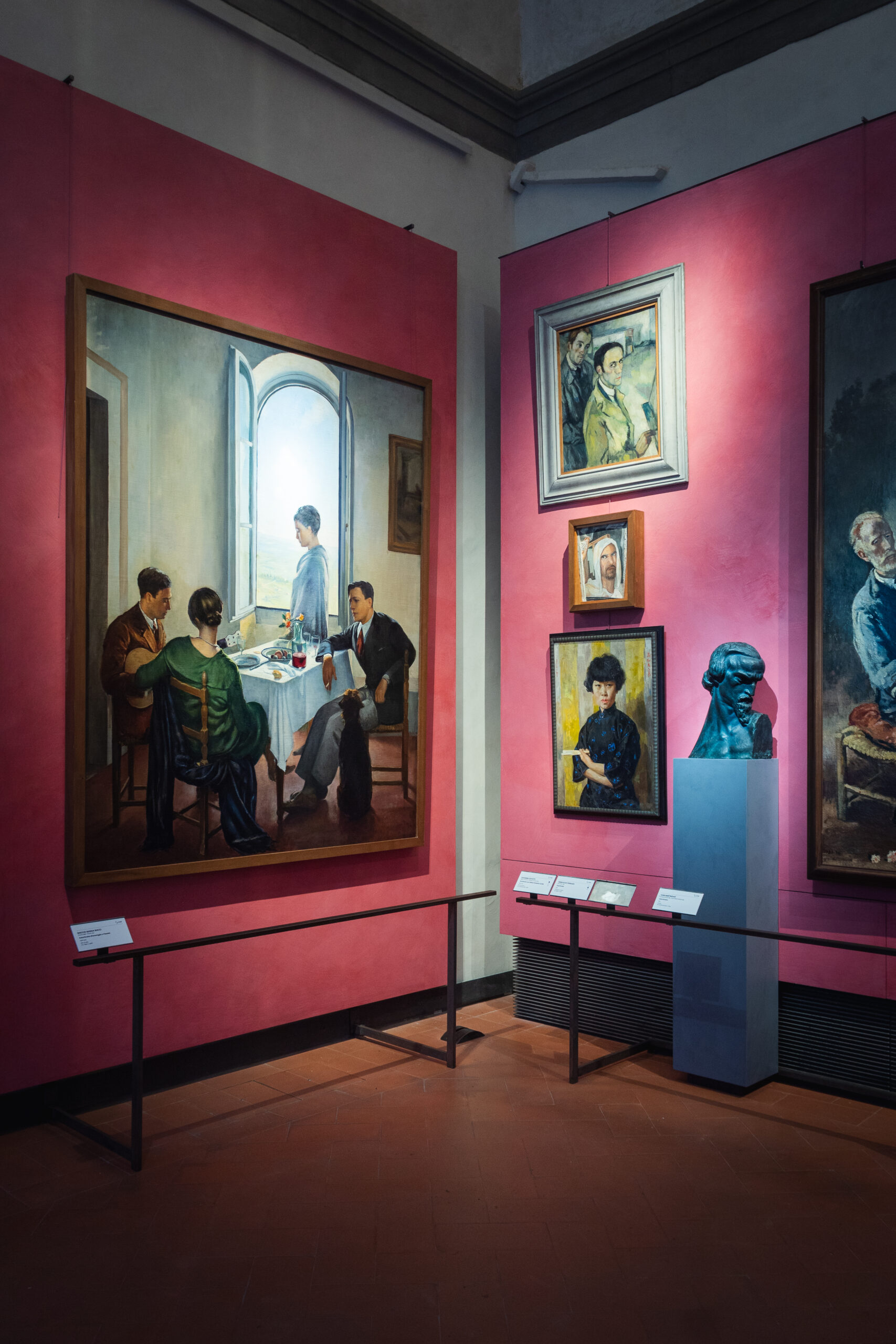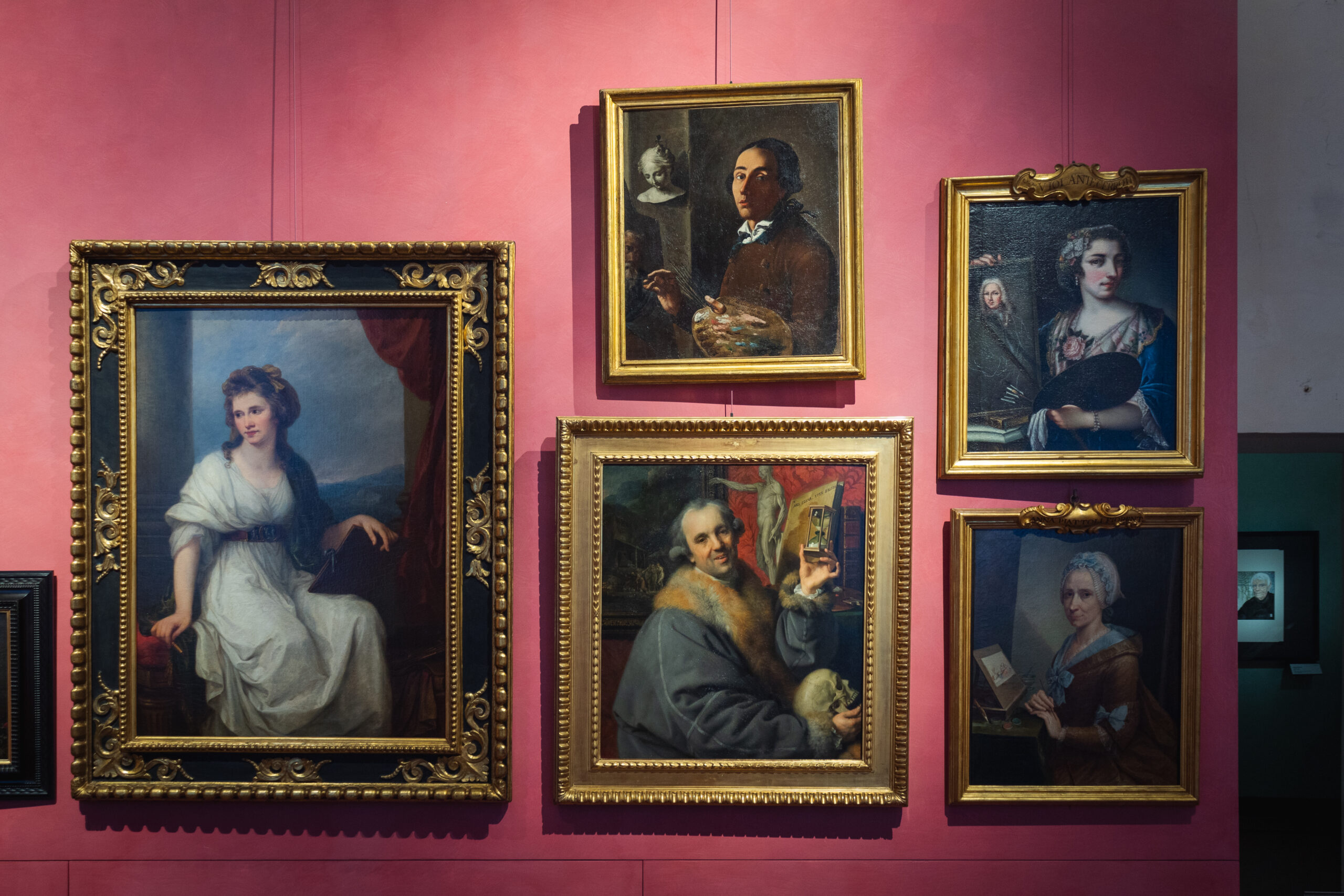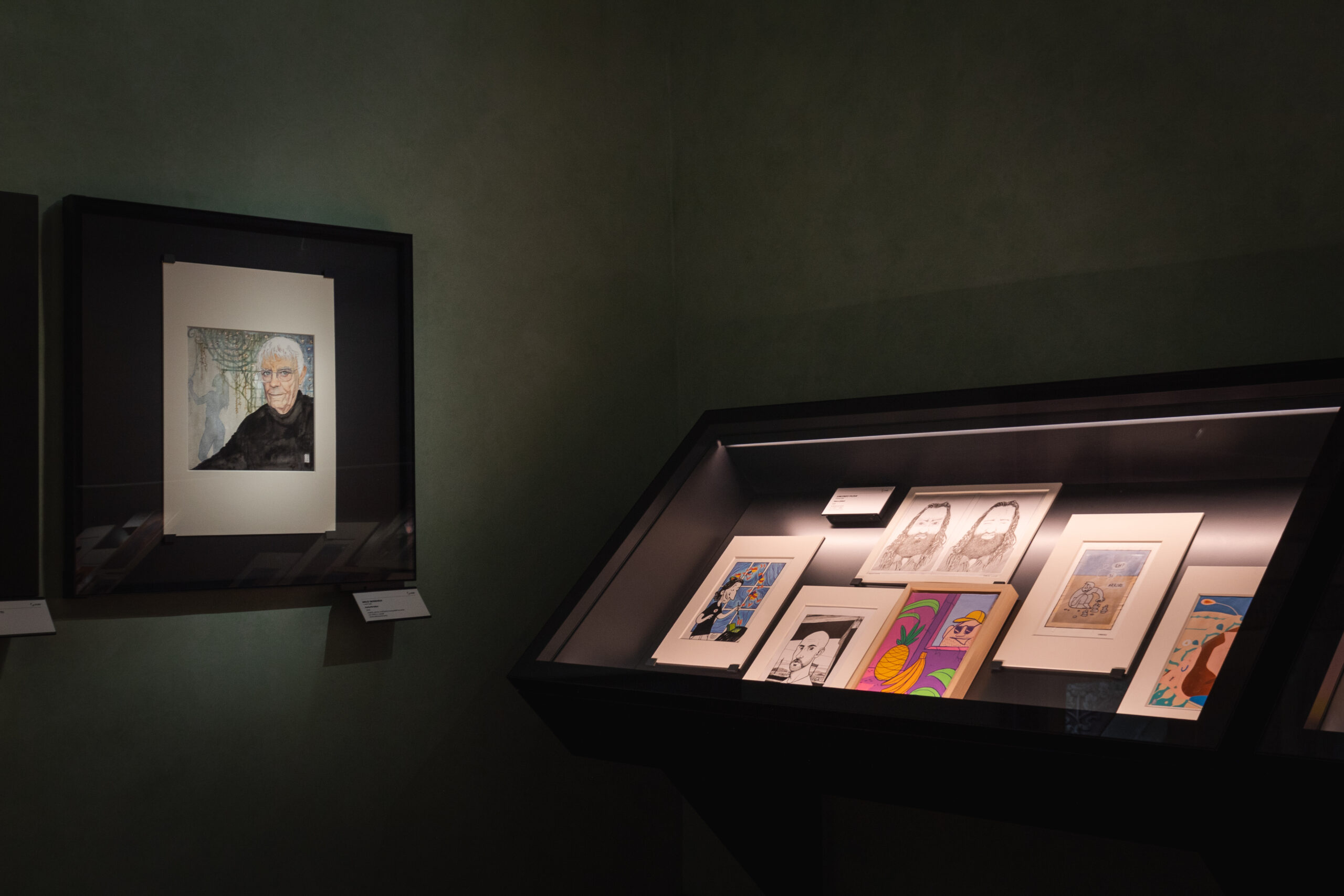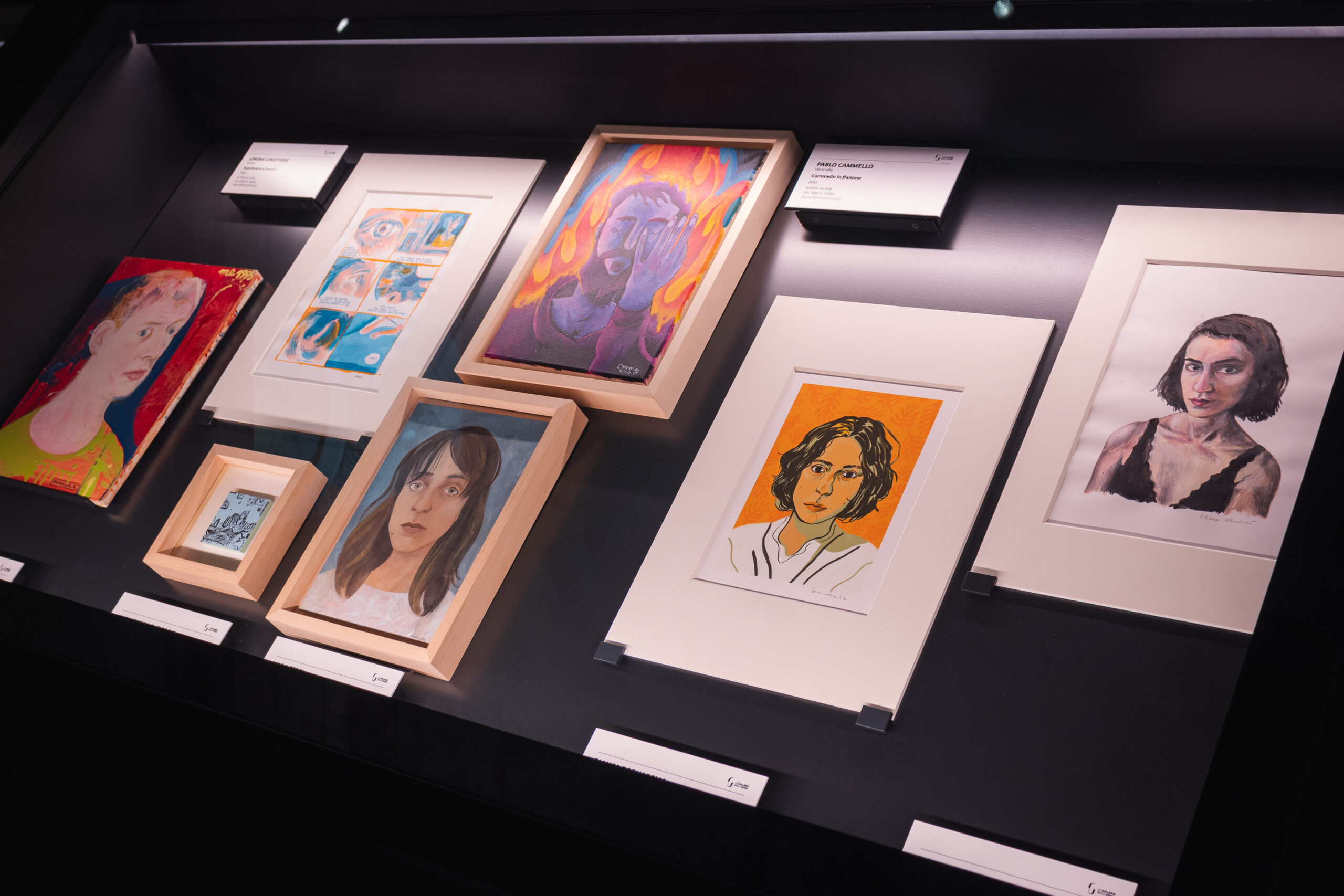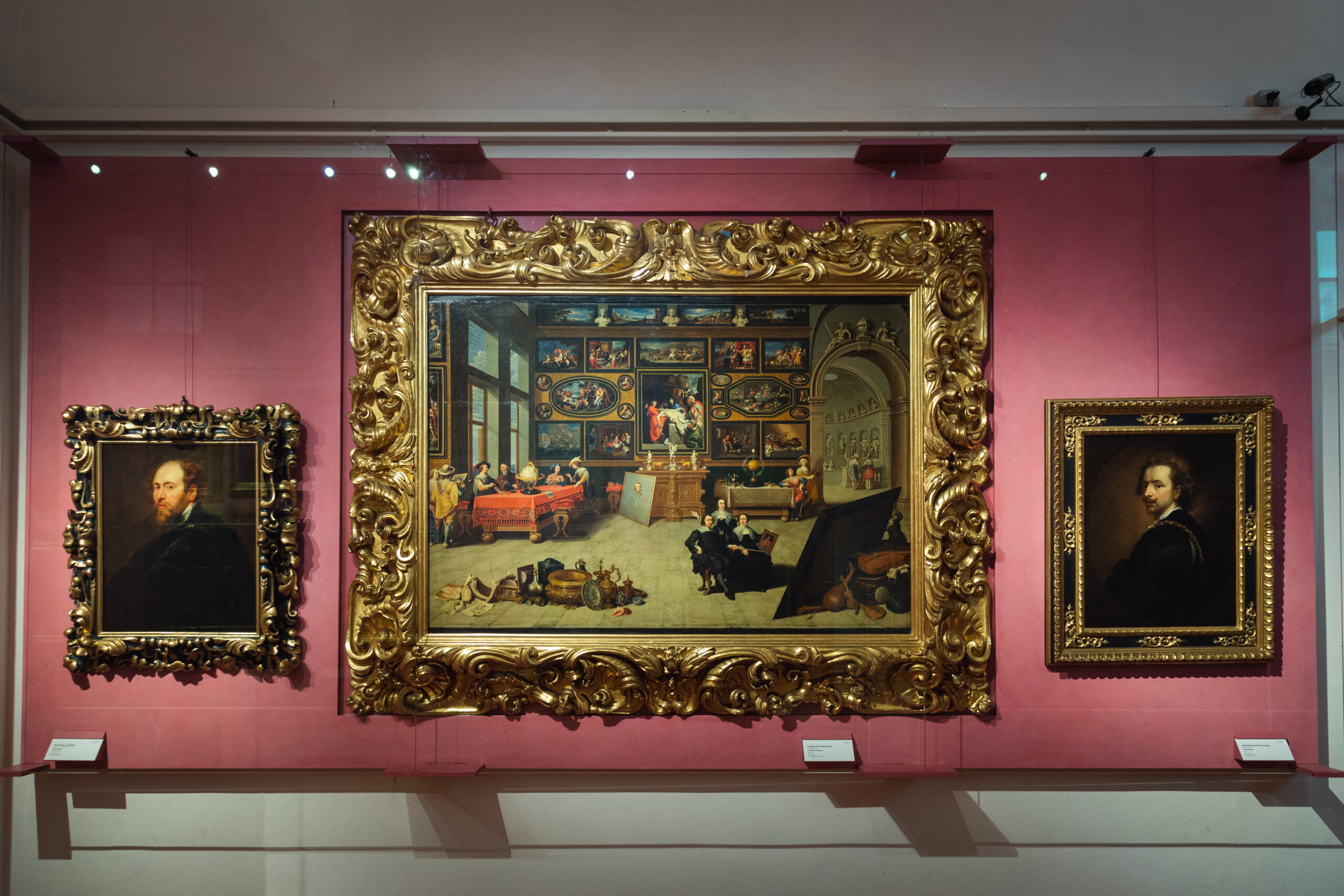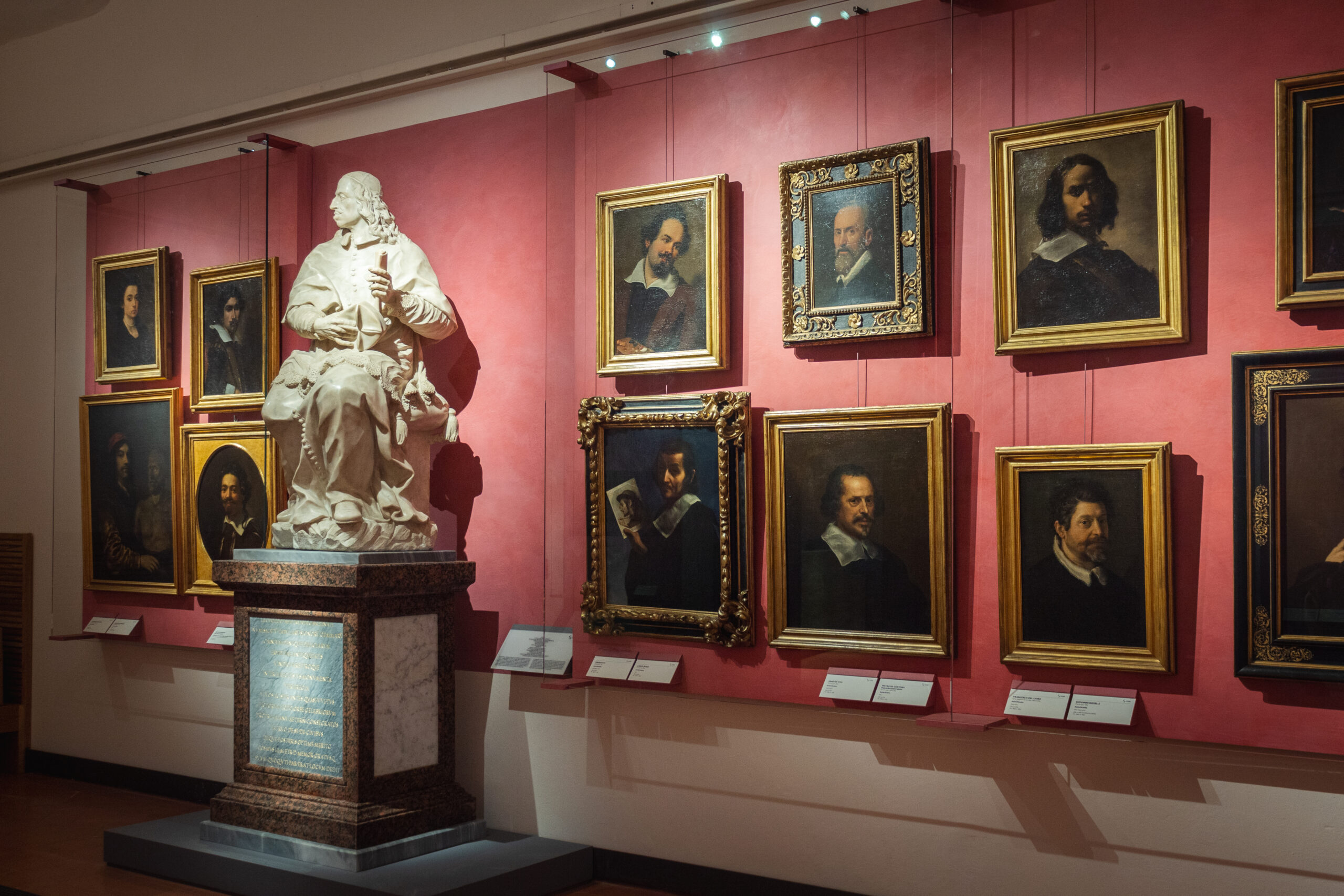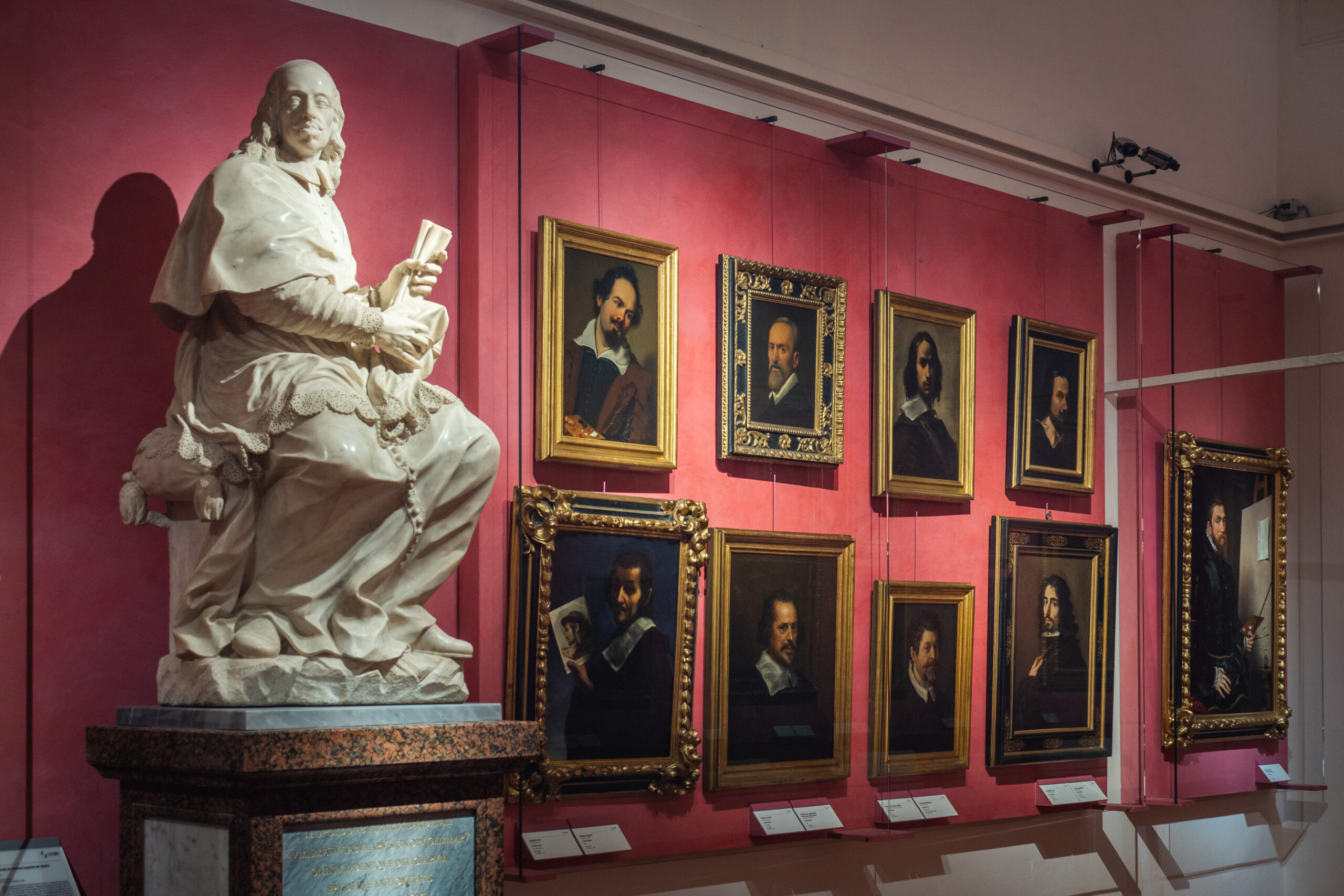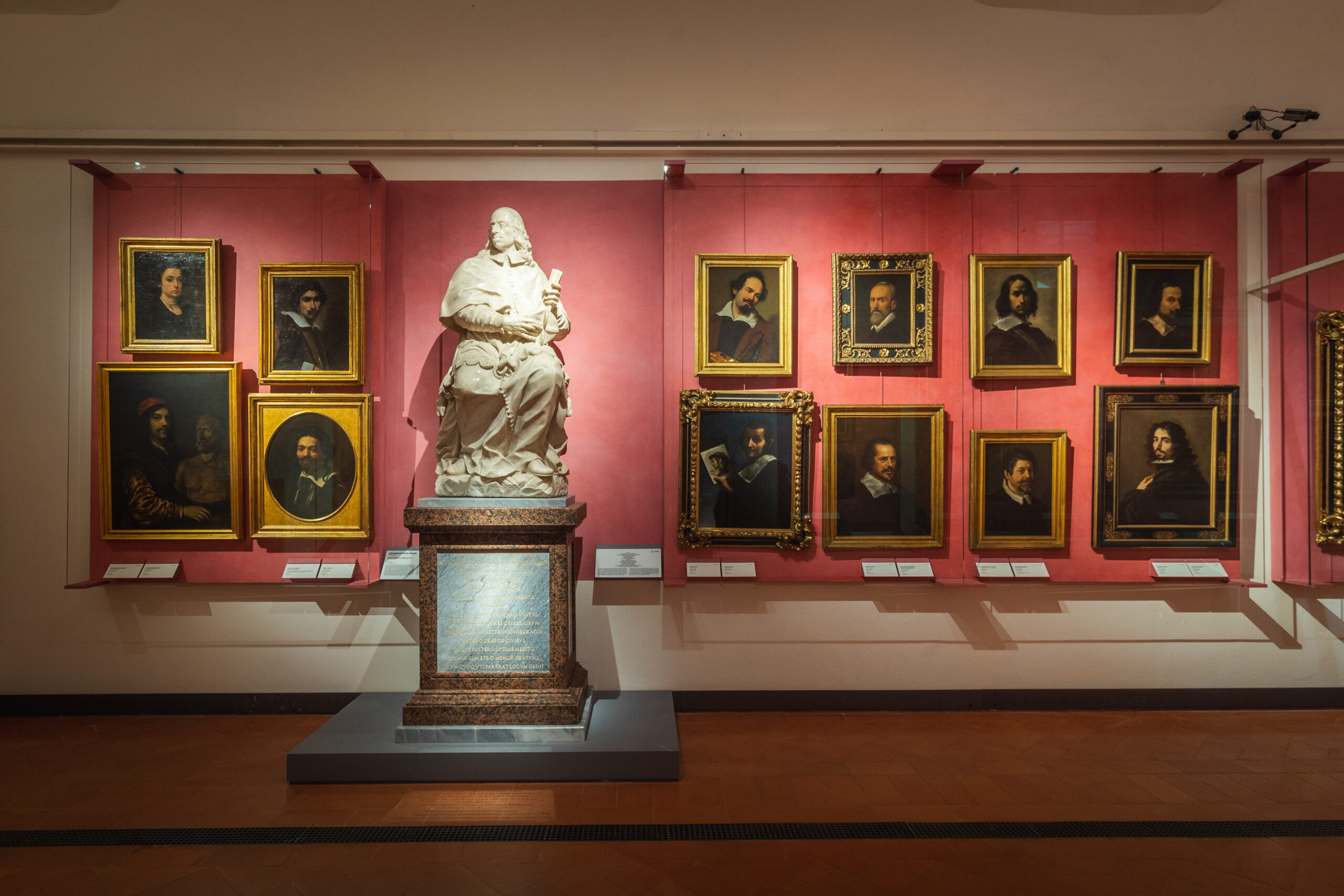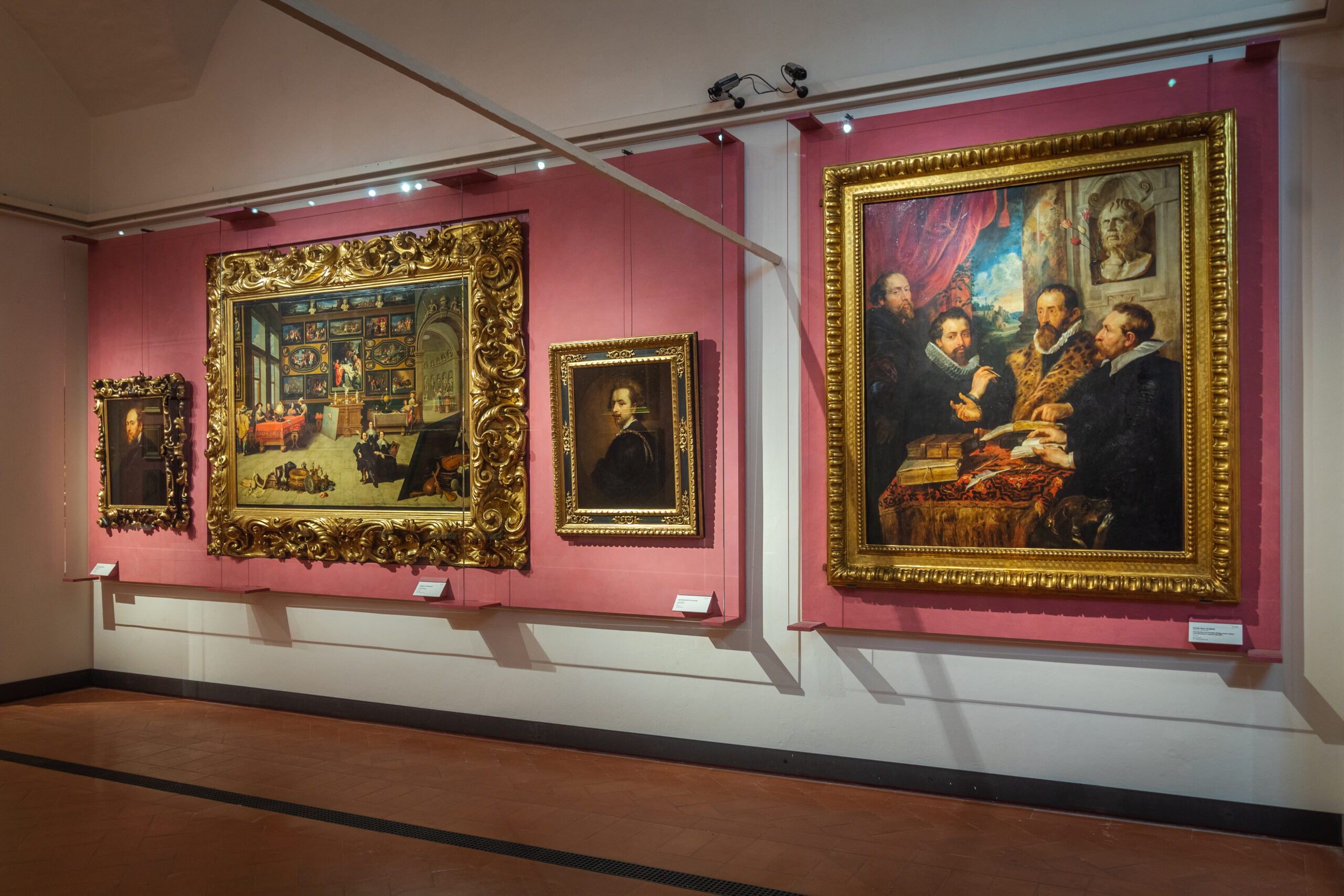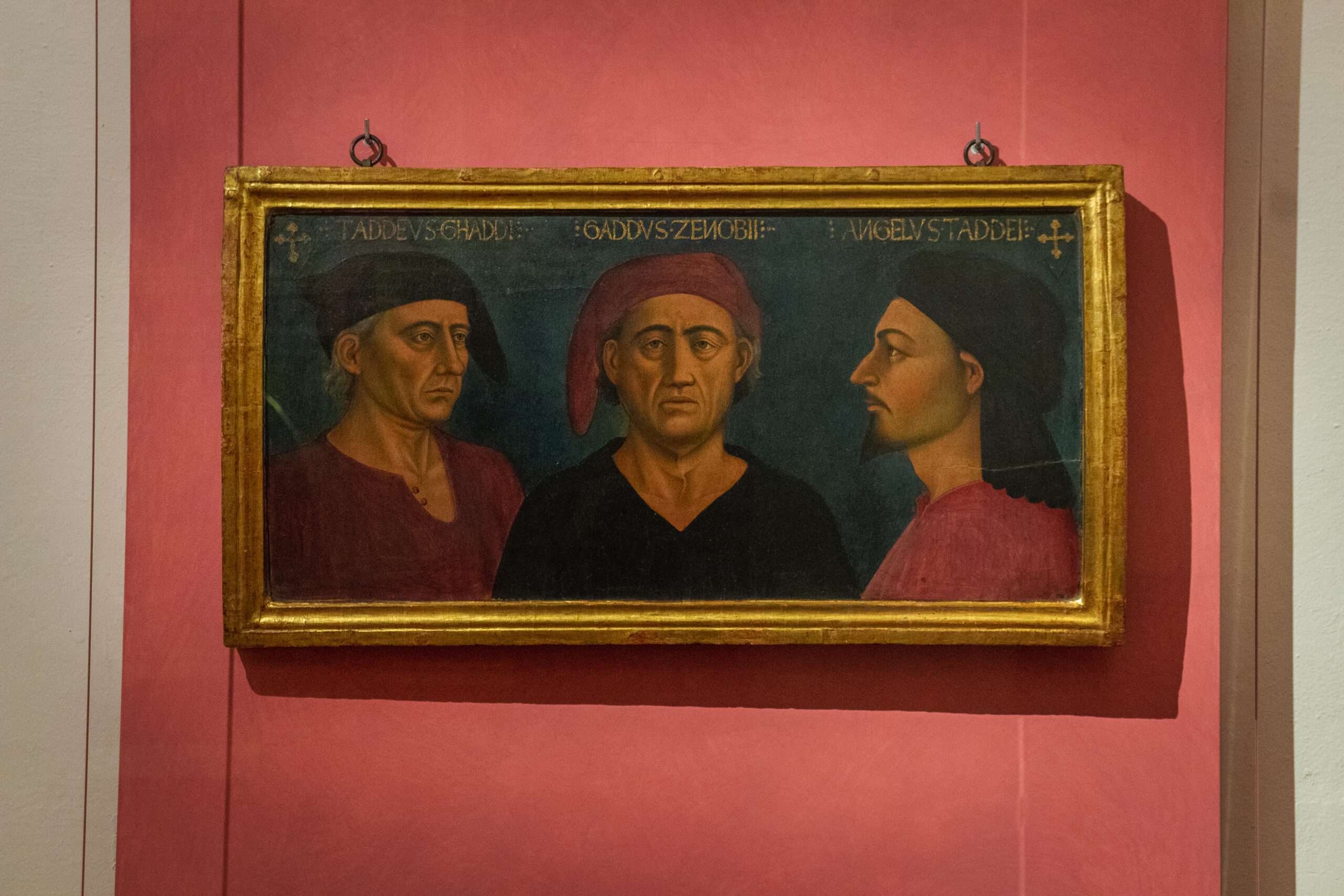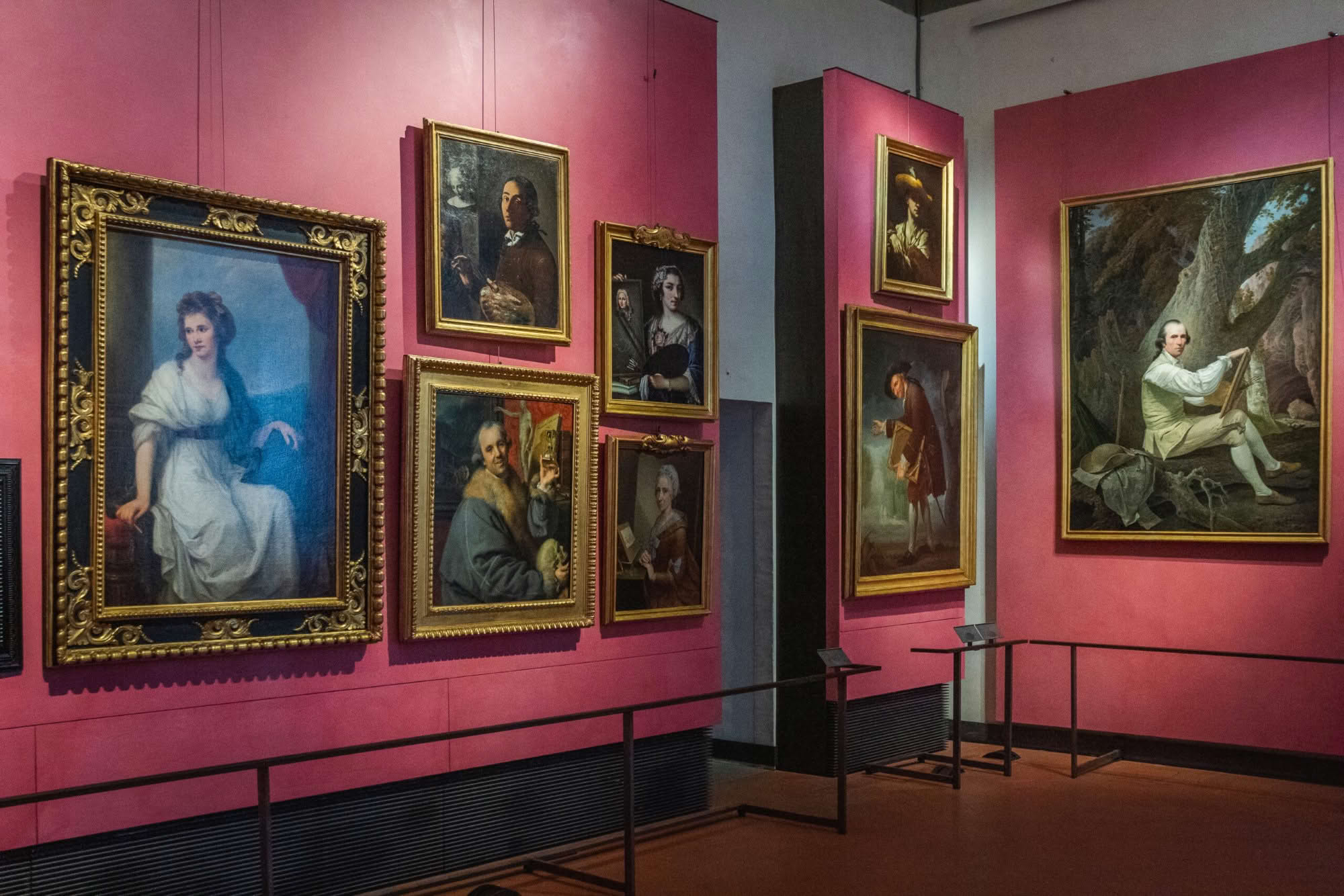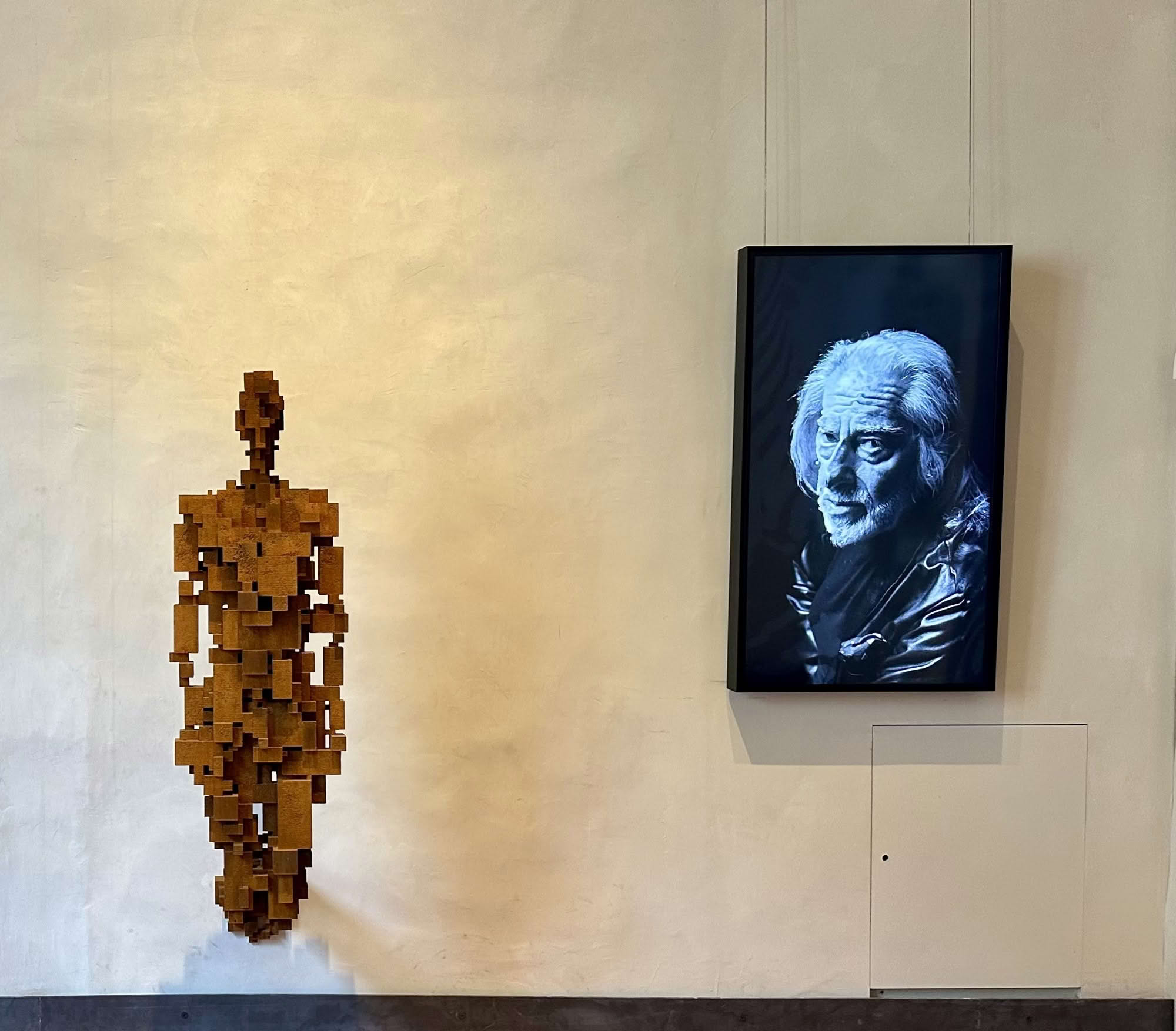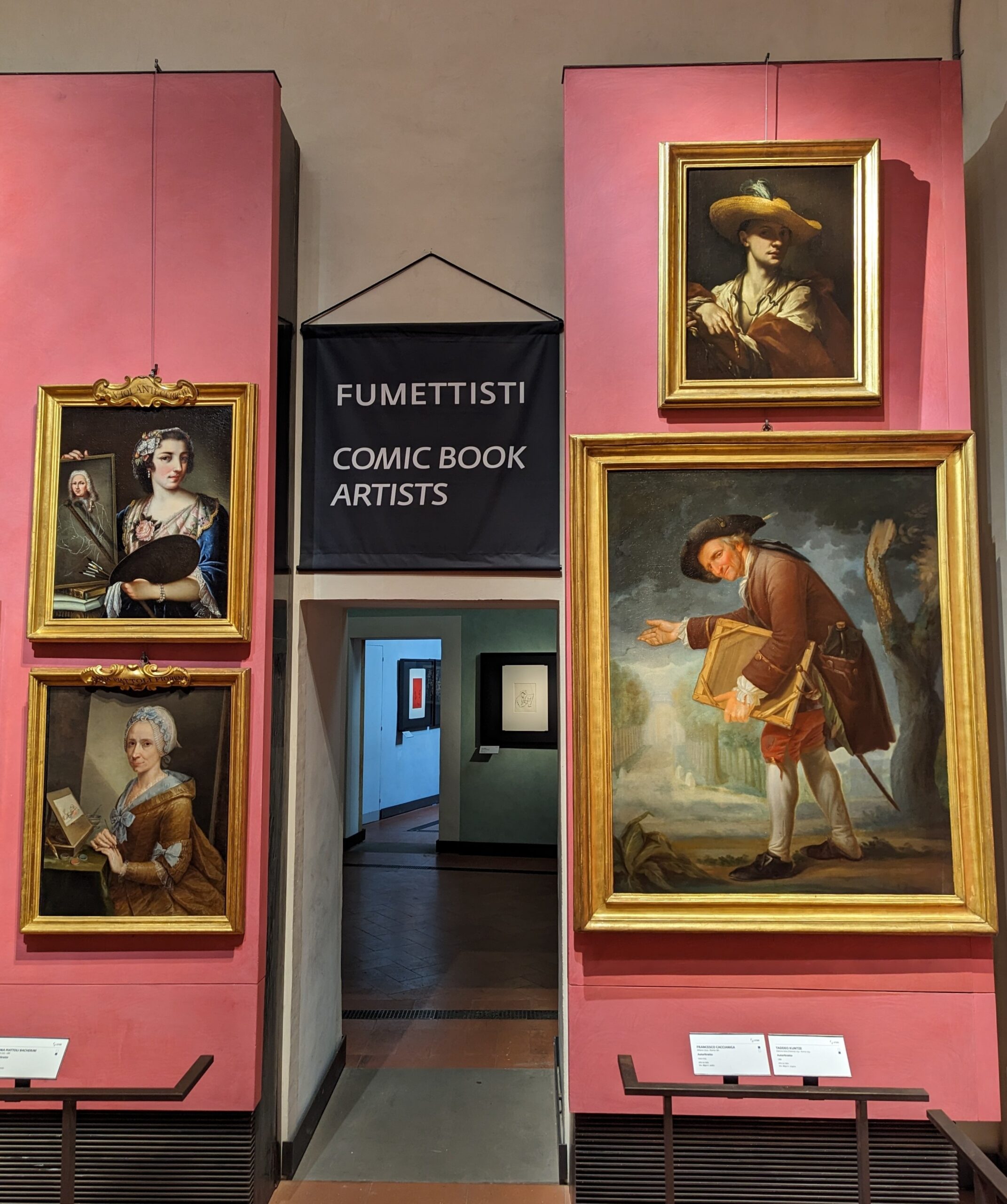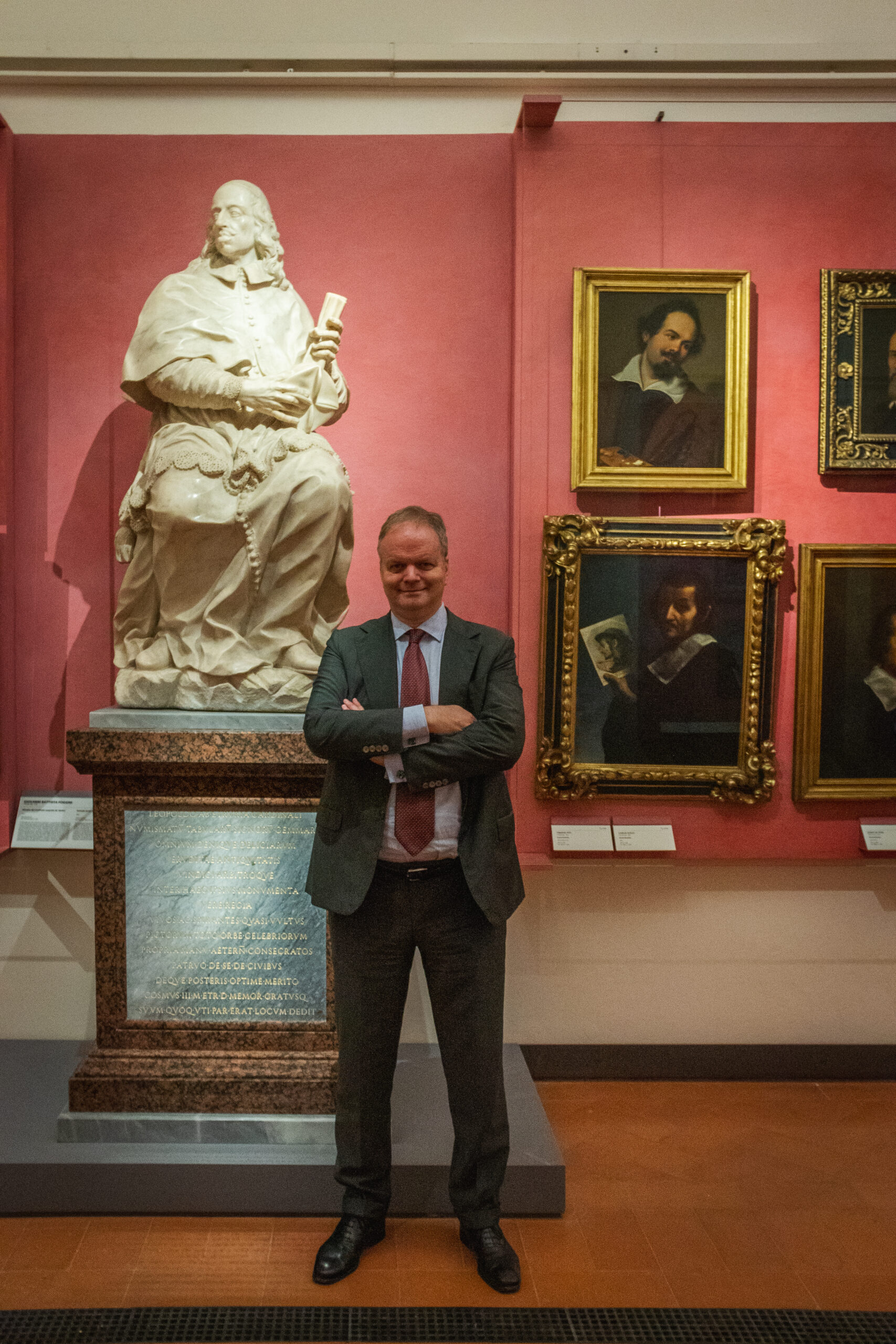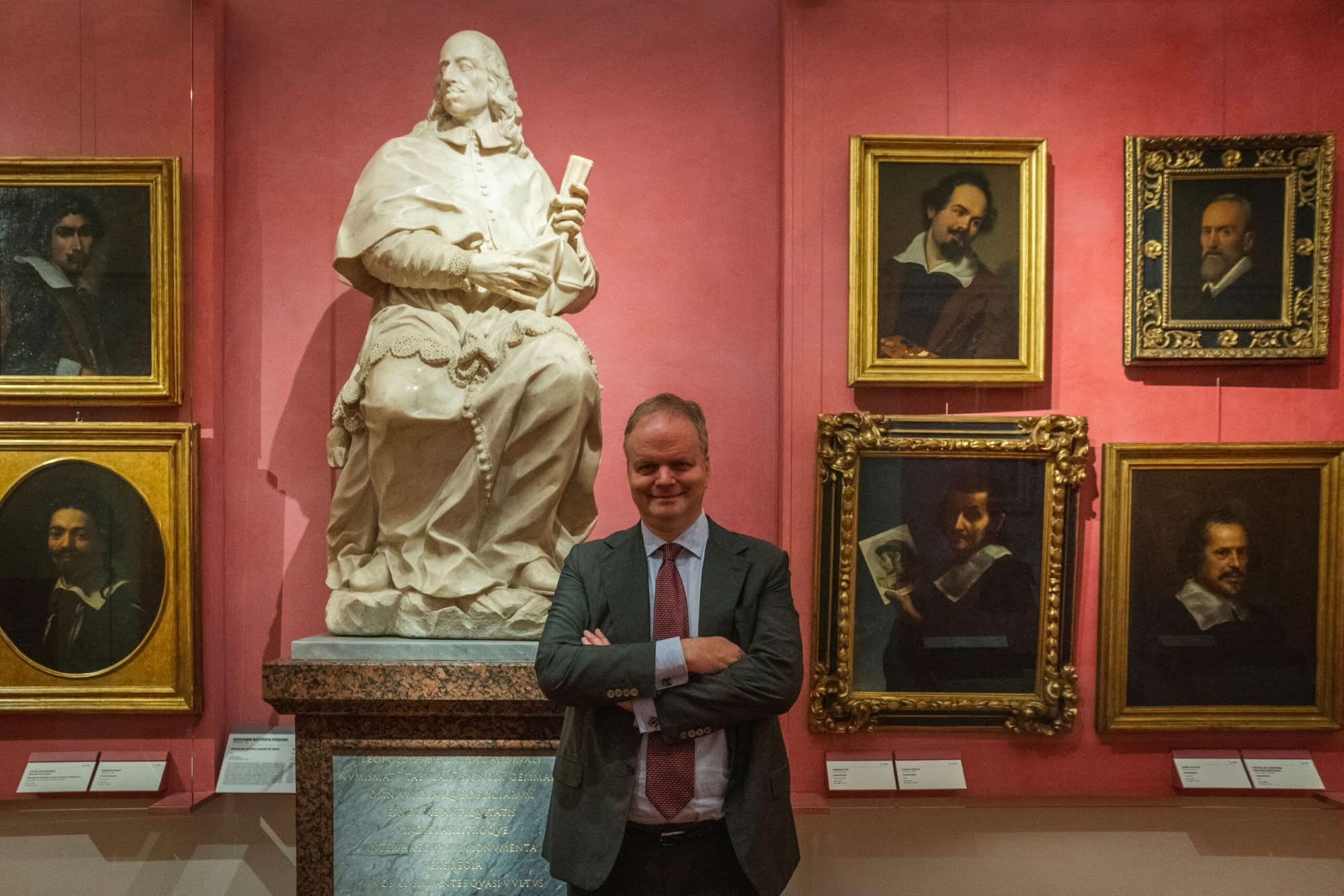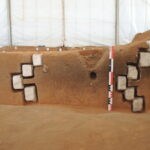THE SELF PORTRAITS ROOMS AT THE UFFIZI GALLERIES. FIVE HUNDRED PLUS YEARS OF SELF-PORTRAITS AND PORTRAITS OF ARTISTS RETURN TO THE GALLERY AFTER A CENTURY: THE NEW INSTALLATION EXTENDS FROM FIFTEENTH-CENTURY MASTERS TO THE PAINTERS, SCULPTORS, VIDEO ARTISTS, AND COMIC BOOK ARTISTS OF TODAY
Today marks the opening of twelve new rooms on the first floor featuring two hundred fifty-five works – paintings, sculptures, drawings, and video art – starting with the portrait of the Gaddi family artists (by an artist from the circle of Fra Angelico) to the present with Bill Viola, Antony Gormley, Ai Weiwei, and Yan Pei-Ming.
The museum owns the world’s largest collection of artist portraits. It was started by cardinal Leopoldo de’ Medici in the seventeenth century and has never stopped growing thanks to acquisitions and donations.
Director Eike Schmidt said: “This new arrangement was made possible thanks to the Pritzker family’s gift of one and half million Euros; the many masters whose works can be admired in the Uffizi and Palazzo Pitti are back in the rooms where artists and craftsman had worked since the sixteenth century”.
The twelve rooms opening today in the Uffizi bring together six hundred years of art history in the form of self-portraits and portraits of artists created from the fifteenth century to the present.
The collection that Cardinal Leopoldo de’ Medici started in the seventeenth century has never stopped growing, and has become the largest, oldest, and most important in the world with over two thousand paintings, sculptures, and graphics. The walls of the newly arranged spaces on the first floor of the gallery are bright pink, alluding to Cardinal Leopoldo’s robes and, a statue of him by the great Baroque sculptor, Giovanni Battista Foggini, greets visitors in the first room. The works are arranged chronologically starting from the earliest, the fifteenth-century portraits of the painters Gaddo, Agnolo, and Taddeo Gaddi, all the way to the last room with the cast-iron statue of Antony Gormley, Michelangelo Pistoletto’s portrait on a mirror and Ai Weiwei’s self-portrait made of plastic toy bricks. Showcasing a selection of two hundred fifty-five works – paintings, sculptures, installations, and graphic arts – the “tour” offers a wonderful opportunity to meet a large array of leading figures in the history of art. Among these are Andrea del Sarto, Federico Barocci, Fede Galizia, Luca Giordano, Rubens, Rembrandt, Rosalba Carriera, the great Neapoltian painters Francesco De Mura and Francesco Solimena, as well as Francesco Hayez, Eugène Delacroix, Arnold Böcklin (author of the famous Isle of the Dead), Giuseppe Pellizza da Volpedo, Elisabeth Chaplin, Adolfo Wildt, Marino Marini, Hélène de Beauvoir, Maria Lassnig, and Berlinde De Bruyckere. Each century, each area is distinctly characterized: the inward-looking Italians; the northern Europeans proud of their craft and social status; the French smothered in lace and powdered wigs. And then, there are the women artists proclaiming their talents without compromising fashionable elegance. Next to Antonio Canova, is the first self-portrait of a sculptress, Anne Seymour Damer who, in 1778, signed her name using Greek letters asserting membership in a cultural world usually closed to women. The video artist Bill Viola is represented with an aquatic installation that immortalizes him among the waves just as Fabrizio Plessi’s rapt face emerges from the water. And there is the self-portrait of the London street artist, Endless, together with Gilbert & George.
Now, after more than a century, the artist’s self-portraits are again part of the normal visit to the Uffizi. From 1973 to 2016 part of the collection was in the Vasari Corridor. The portraits could only be viewed during the few allowed, and limited, tours of the corridor which had neither a climate control system nor adequate lighting.
Many of the works have undergone major conservation work and can now be admired to the fullest (these include Rubens’ splendid self-portrait that was just restored by the Opificio delle Pietre Dure, and Rembrandt’s, financed by the American donor Diana Bell). Numerous items were not in the Vasari Corridor and were brought up from the museum’s storage rooms where access was restricted to only few scholars. In order to show the many faces in this enormous collection, the Uffizi will rotate the displays especially with regard to living artists, but not only them. A similar criterion – but in this case linked to conservation needs – will be applied to all the works on paper displayed in the two magnificent rooms decorated by the nineteenth-century artist Luigi Ademollo.
The Self Portraits Rooms at the Uffizi Galleries. Pictures:
The new arrangement presents a unique picture, as it were, in which the chronological story is enhanced by thematic and figurative excursions. We see artists with their families, or showing their work, or leaning out of a window, or with their faces on an easel. The more classic portraits (featuring only the sitters’ faces) are the earliest ones grouped around the imposing statue of Cardinal Leopoldo de’ Medici. Visitors will encounter many surprises along the way: portraits of artists at work in their studios; many self-portraits of Northern European artists – Grand Duke Cosimo III’s passion – but relegated to storerooms up to now. There is also a fascinating group of discoveries and new acquisitions. The latest additions to the collection – over the past few months – are Jan Soens’s Self-portrait with his Two Children, and John Francis Rigaud’s Portrait of the Artist with his Wife and Children, in his Studio a gift of the Friends of the Uffizi Galleries – the American branch of the Amici degli Uffizi – that arrived just a few days ago as did the large, ironic self-portrait of the Polish artist Tadeusz Kuntze (1786) and the portrait of the famous Chinese artist Pan Yuliang painted by her teacher Umberto Coromaldi (1927) while she was studying in Rome.
THE COMIC BOOK ARTISTS
Another first – among the world’s major museums – is a temporary exhibition dedicated to the comic book artists. Thanks to the Culture Ministry’s project Cartoons in the Museums (Fumetti nei musei), and the cooperation launched in 20021 between the gallery and Lucca Comics & Games, the Uffizi presents fifty-four self portraits by Italian artists including Milo Manara, Lorenzo Mattotti, Altan, and by Will Eisner, the father of American comics in two rooms frescoed by Luigi Ademollo in the nineteenth century. The same rooms, dedicated to works on paper (which are light-sensitive and can only be displayed for a few months a year), will host rotating exhibitions of photographs, early and modern drawings, prints, and new acquisitions.
SIXTEENTH CENTURY LOMBARD PAINTINGS
And there is one more surprise: the opening of a new room featuring sixteenth-century Lombard painting. With its grey walls, like those of the adjacent rooms dedicated to the same period, it hosts eleven paintings including the recently acquired majestic Saint Paul by Giovanni Pietro Gnocchi and Pellegrino Tibaldi; Leda and the Swan by Leonardo’s pupil, Francesco Melzi; the lofty Portrait of Cavaliere Pietro Secco Suardo by Giovanni Battista Moroni; and the large Madonna and Child with Saints Martha and Mary Magdalene by Girolamo Figino.
Eike Schmidt, Director of the Gallerie degli Uffizi: “We are grateful to the Pritzker family, generous patrons who, with their gift of one and a half million Euros made it possible to restore many paintings and to create the new arrangement. The first two volumes of the catalogue of the entire collection will be published this year. To this end, the works were studied and examined by the world’s greatest experts. They proposed new attributions for many paintings, and disproved more than a few regarding the seventeenth century. Cardinal Leopoldo’s agents often let themselves be taken in by swindlers who peddled paintings that were copies or even fakes produced for the occasion. But this guarantees an even more precise selection that allows the visitors to understand the collection’s international nature over the centuries. These self-portraits reveal the artists’ personalities, from the most staid to the most playful and spirited, from the loner to the one who depicts himself in company (less common), or is absorbed in his work. And the tastes and approaches of each period to recur over the years. Visitors will see that twentieth-century introspection was already evident in the sixteenth century: Johaness Gumpp’s 1646 self-portrait from the back almost predicts Nano Campeggi’s picture on both sides of the canvas painted earlier in this century. Each period has its own code of family portraits; pride in work can be expressed by showing “tools of the trade” or in a valuable necklace and a lavish costume, or in a portrait of a patron together with that of the painter. But, above all, the new arrangement in the first-floor rooms brings back to life the many masters who worked here creating the art that can be admired throughout the Uffizi and Palazzo Pitti”.
Press release from the Uffizi Galleries.

